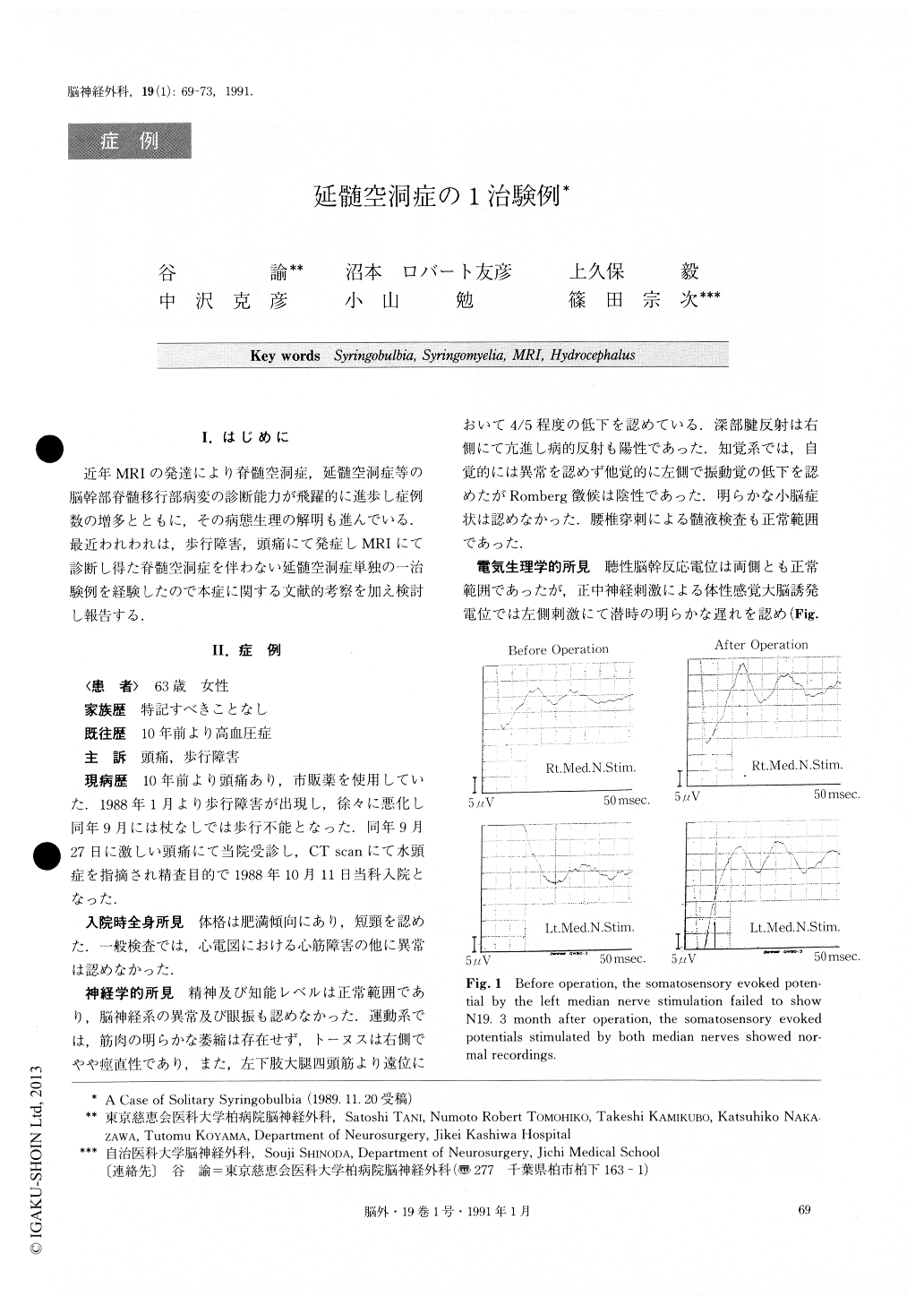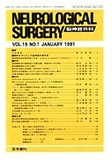Japanese
English
- 有料閲覧
- Abstract 文献概要
- 1ページ目 Look Inside
I.はじめに
近年MRIの発達により脊髄空洞症,延髄空洞症等の脳幹部脊髄移行部病変の診断能力が飛躍的に進歩し症例数の増多とともに,その病態生理の解明も進んでいる.最近われわれは,歩行障害,頭痛にて発症しMRIにて診断し得た脊髄空洞症を伴わない延髄空洞症単独の一治験例を経験したので本症に関する文献的考察を加え検討し報告する.
A case of solitary syringobulbia without syringo-myelia diagnosed by MRI was reported.
A 63-year-old female, who had a history of progres-sive gait disturbance for 9 months, was admitted to our department because of severe headache. Neurological examination revealed that the patient was suffering from right pyramidal sign as well as left deep sensory disturbance without apparent impairment of cranial nerves or nystagmus. The somatosensory evoked potential stimulated by the left median nerve showed delay in latency and low amplitude, however, the audi-tory brainstem response showed normal records bilaterally. A syringobulbia associated with platybasia, basilar impression, obstructive hydrocephalus and Arnold-Chiari malformation was diagnosed by the neuroradiological examinations including plain X-ray films of the skull, CT scan and MRI of the brain. Sub-sequent to the decompression around the cisterna mag-na by suboccipital craniectomy and laminectomy of the atlas, the opening of the Foramen Monro which was obstructed by a thick membrane was carried out, and prevention of comunication between the fourth ventri-cle and the syrinx was accomplished by using a piece of muscle. This operative procedure was thought to be compatible with Gardner's operation for syringomyelia. The patient showed gradual improvement of gait dis-turbance as well as headache 3 months after surgery, and this neurological improvement was proved by de-crease in the size of the known syringobulbia on MRI, and by normalized somatosensory evoked potential stimulated by the median nerve.
Pathophysiology of the solitary syringobulbia with relatively acute onset of the neurological symptoms was assumed to have taken place in the following man-ner. The cerebrospinal fluid from the dilatated ventricu-lar system originally flowed into the syringobulbic cavi-ty as well as the cisterna magna instead of into the spinal central canal. Relatively sudden occlusion of the Foramen Monro and the fibrous membrane between the syringobulbic cavity and the cisterna magna re-sulted in the retention of the cerebrospinal fluid in the syringobulbic cavity. The conjectured pathophysiology of this disease is thought to be compatible with Gard-ner's theory for syringomyelia.

Copyright © 1991, Igaku-Shoin Ltd. All rights reserved.


